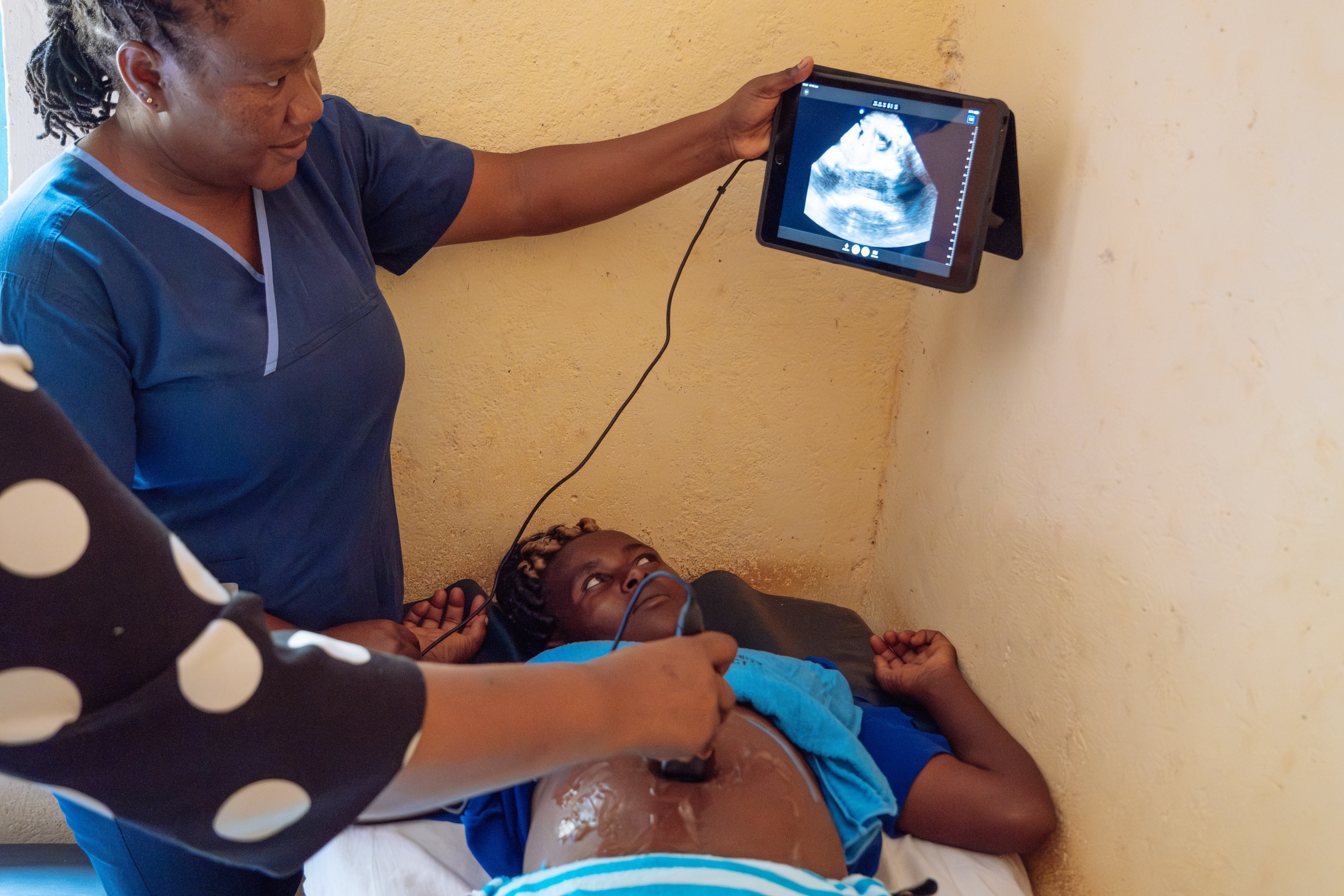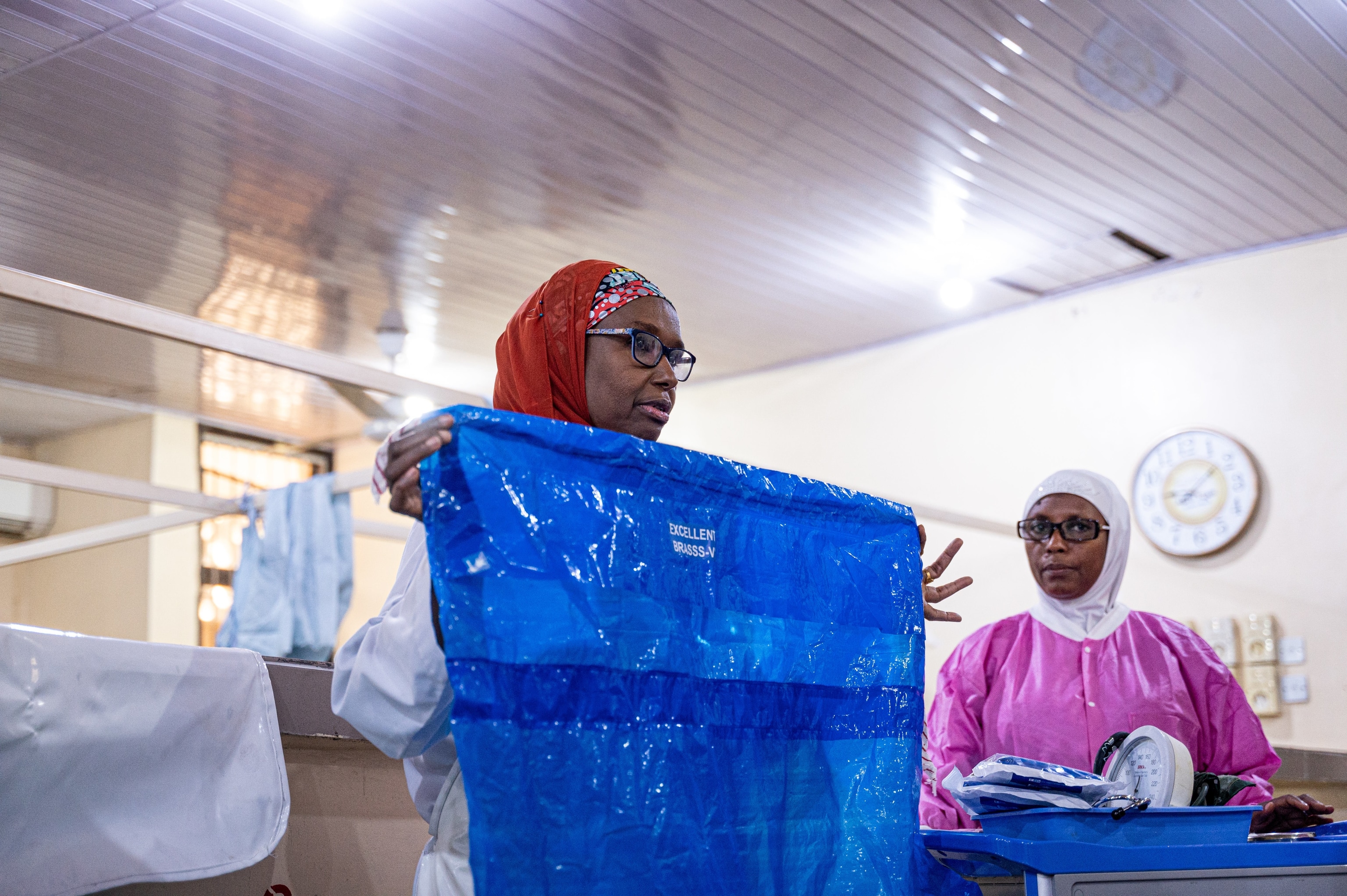Blog
The future of child health: Innovating to make childbirth safer for all


Illustrated by Tayla De Beer
While the numbers are staggering, the reality is that most of these deaths are preventable. For example, the four most common causes of maternal mortality are hemorrhage, high blood pressure, infections, and complications from delivery. There are effective ways to detect, prevent, or manage all of these, but the interventions that can help are often too costly or difficult to deliver where they are most needed -92 percent of maternal deaths occur in low- or middle-income countries. And now, after decades of improvements in maternal and child survival, progress has stalled.
The good news is that it’s still possible for the world to get back on track. Rapidly expanding knowledge and a raft of recent innovations are helping to make lifesaving care more affordable and more accessible—supporting safer, more dignified births for mothers and newborns everywhere.

A newborn baby is cleaned by his mother in a maternity ward in India. Birth and the following few weeks put enormous pressure on the bodies of both mother and baby, but new innovations are making lifesaving care more accessible.
Photography by MANSI MIDHA © Gates Archive

An expectant mother rests while receiving an intravenous iron infusion in Nigeria. A one-time, 15-minute iron infusion helps prevent a range of serious problems, including premature birth and severe blood loss during labor.
Photograph by Nyancho NwaNri © Gates Archive
An expecting mother settles into a bed as a healthcare professional inserts an intravenous drip into her arm and begins the flow of an iron supplement. Iron deficiency anemia is extremely common in pregnancy because the body is making more blood than usual and can’t always get the iron it needs from food alone. This can cause serious problems, including premature births, low birth-weight babies, and dangerous blood loss during labor. Traditionally, iron deficiency is prevented by a six-month course of iron tablets that is not always possible or pleasant to complete, given side effects like nausea. But a one-time intravenous iron infusion delivers what’s needed for most pregnancies in just 15 minutes, reducing the risk of mothers missing out on a simple, life-saving intervention.
Other beneficial preventive medicines are also set to become more available. Researchers have discovered that a common antibiotic, azithromycin, significantly reduces maternal infections and the risk of sepsis, an extreme reaction to infection. Successful trials in vulnerable communities suggest that routinely giving azithromycin during labor could significantly reduce maternal sepsis every year, while a twice-yearly dose helps protect babies and infants from a number of deadly, but preventable diseases.

A nurse in Kenya conducts an ultrasound using a handheld device. These low-cost and portable devices can also incorporate AI enhanced software to bring lifesaving diagnostics to remote areas.
Photograph by Khadija Farah © Gates Archive
On a handheld tablet, the ultrasound image of an unborn baby flickers into focus, revealing vital information to health professionals and welcome reassurance to parents. At least one diagnostic ultrasound is recommended for all pregnancies before 24 weeks gestation and is often taken for granted in wealthy countries. But two-thirds of the world don’t have access to these bulky, expensive machines with their specially trained operators. However, low-cost portable and AI-enabled ultrasound devices have been developed that can be plugged into a smartphone or tablet for use anywhere. User-friendly AI-enhanced software reads the images to provide the same level of information and analysis as a specialist—accurately identifying high-risk pregnancies and gestational age. This could bring the reassurance of early diagnostics and treatment to expectant mothers in the most remote parts of the world.
Even after a healthy full-term pregnancy, going into labor is a daunting time for mothers when physical and mental exertion is exacerbated by uncertainty. In this critical period, subtle bodily changes can signal the need for urgent medical intervention, making constant monitoring of vital signs invaluable. But the limited availability of traditional monitors in low-resource regions means many births happen without this fundamental monitoring. To solve this, innovators are tapping into existing wearable technologies to develop sensors that are affordable, wireless, and wearable. These sensors can be much more easily and widely deployed to detect complications and prompt interventions.

Lifesaving innovations don’t have to be high-tech or even complicated. A teacher in Nigeria demonstrates the PPH drape, a simple plastic sheet that helps measure blood lost in labor.
Photograph by Nelson Owoicho © Gates Archive
But not all life-saving innovations are high-tech. In a delivery room, a nurse glances at a calibrated scale on a bag capturing the blood lost in labor and in the hours after delivery, and can quickly determine if action is needed. Postpartum hemorrhage (PPH), losing more than half a liter (one pint) of blood within 24 hours of childbirth, is the world’s leading cause of maternal mortality. This is in large part because blood loss can be difficult to gauge, especially in birth settings with limited resources. A PPH drape is a small, inexpensive plastic sheet placed beneath the birthing mother. It channels lost blood into a calibrated bag, making it easy to see when interventions are needed—with the potential to save the lives of more than 70,000 birthing mothers every year.
But when too much blood is lost, another innovation increasingly has the opportunity to play an important role in saving lives. In a range of low- and middle-income countries around the world, unmanned drones are now being deployed to speedily deliver critical resources—including blood, medicines, and equipment—to patients in urgent need in remote locations. This innovative use of existing technology is helping to bring lifesaving medicines to mothers and newborns wherever they are.
A mother is presented with her newborn baby, and an energy seems to pass between them: An immediate and instantly recognizable bond is formed. This is a universal experience that all mothers should be able to enjoy, regardless of where they live. The power of innovation is saving the lives of mothers and babies around the world, bringing us closer to ending preventable deaths from pregnancy and childbirth. Through the global efforts of health workers, governments, innovators, funders, delivery organizations, and their partners, innovative new tools and proven practices can help ensure more mothers everywhere are able to experience the healthy cries of their newborn baby—irrespective of where they’re born.
Find more life-saving innovations here.
More on child and mother healthcare innovations here.



















